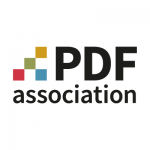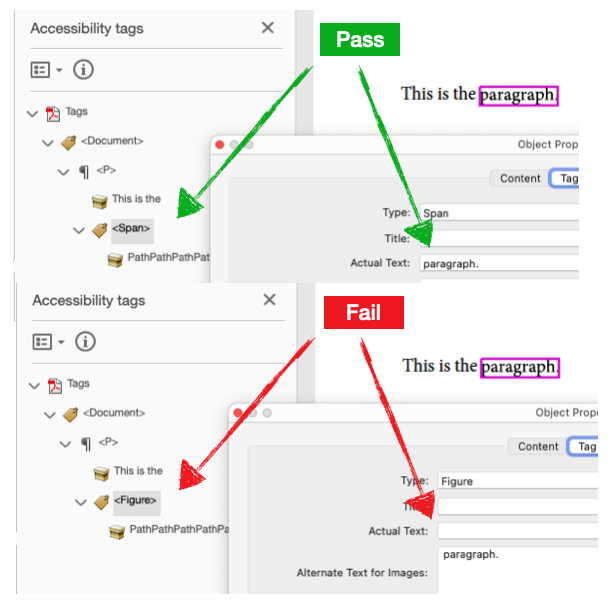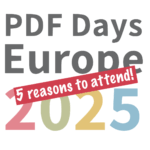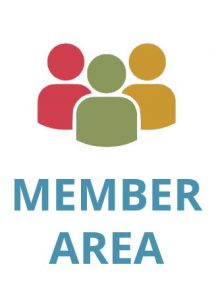PDF techniques for accessibility: a new model

The PDF Association staff delivers a vendor-neutral platform in service of PDF’s stakeholders.


In 2018 the PDF Association’s PDF Accessibility Liaison Working Group began a project to develop a set of definitive techniques for accessibility in PDF files.
The PDF Association will shortly launch its initial set of “Fundamental Techniques”. To provide a taste of what is to come, we now present examples of PASS and FAIL techniques.
This short article outlines how we have set out to improve upon WCAG’s techniques in several specific ways.
Comprehensive
When WCAG 2.0 was published in 2008 it launched with an initial set of 23 Techniques for PDF. Although there have been minor updates since then the scope and format has remained the same. There are no PDF examples provided and the application screen-shots are (naturally) vendor-specific. In general, since 2008 the information presented regarding PDF on w3.org has become dated.
Although today we are posting only one PASS and corresponding FAIL technique to explain our model, our next release, coming before the end of 2023, will consist of 36 “Fundamental” Techniques that apply to all PDF files.
Beyond the Fundamentals, starting in early 2024 we plan to begin releasing “Use case” Techniques covering the myriad types of content that can exist in the PDF context. So far the Accessibility LWG has developed over 160 such “Use Case” Technique-candidates, and expects many more to follow.
Example files
Instead of providing guidance with respect to specific software, the PDF Association’s Techniques provide example PDFs for each Technique, each one including the bare minimum of content necessary to ensure focus on the key information in each case.

Vendor-Neutral
One significant complaint with the original WCAG Techniques for PDF regards the fact that the Techniques are rooted in guidance for how to use specific (and now, dated) software packages rather than focussing on correct (and incorrect) results in the PDF itself.
The PDF Association’s new Techniques are entirely vendor-neutral; presenting results rather than applications or specific workflows. This approach was chosen to ensure that all vendors and users would have an equal opportunity to understand and apply these techniques in their own contexts.
Test procedures modeled on WCAG’s
For compatibility with WCAG, the PDF Accessibility LWG has taken a similar approach to WCAG in terms of describing Techniques and their respective tests.
Technique Finder
Each Technique will be posted on an individual page on pdfa.org. In addition, the PDF Association is introducing the "Accessibility Technique Finder”, a string of characters that uniquely identifies the Technique to search engines.
The purpose of the Technique Finder is to help users to rapidly determine whether a given vendor or software package has stated their support for a given Technique. Users can simply search for the vendor or product name and a specific Accessibility Technique Finder code in order to locate web pages documenting the vendor’s approach to that specific technique.
Glossary
In addition to the Techniques themselves the PDF Accessibility LWG has prepared a glossary of key terms used in the Fundamental and Use Case Techniques.
Audience
The PDF Association’s Accessibility Techniques are designed to provide guidance to two key groups:
- End users can use these Techniques to learn how to tag or check PDF files.
- Developers can use these Techniques to understand the technical requirements of accessibility.




